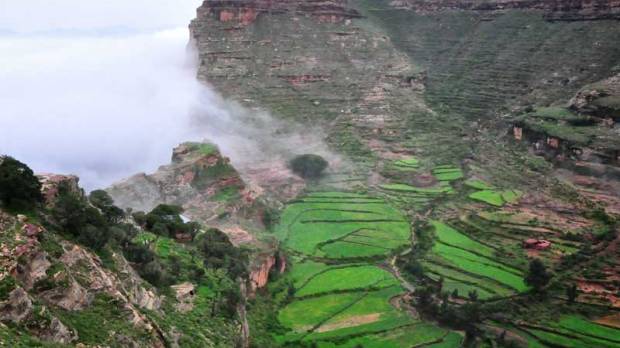There has been a great deal of speculation over the years as to what inspired J.R.R. Tolkien’s Middle Earth in his Lord of the Rings trilogy, one of the best selling books of all time. And no wonder it’s been a mystery as even Tolkien himself said his ideas came to him “as though they already existed” but he couldn’t name their source.
For decades, researchers and biographers have hazard guesses about it, but one of the most interesting theories was posited in a book a few years ago by an Australian author and Tolkien fan named Michael Muhling in Discovering the Origin of The Lord of the Rings.
Muhling believes the backdrop for Tolkien’s trilogy was the Abyssinia Empire — modern day Ethiopia.
Abyssinia, home to a 3,000 year old royal dynasty and the Oromo tribe, was an ancient Christian Empire and one of the four great centers in the world until it became cut off from the Middle East and Europe during the rise of Islam. After that it became an isolated place, surviving colonization attempts by European powers. Only with Italy’s invasion in 1935 did it find itself “on the map” again around the world.
Abyssinia is rich in legends and history; its saints, traditions, and achievements are interesting and unique. As Muhling came to learn more about it, he began to believe it was the backdrop for Tolkien’s trilogy. He discovered incredible similarities between the realms Tolkien created with many historical sites in Ethiopia, for example: Gondor/Gondar, Rohan/Roha, Barad-dûr/Bahir Dar, and Harad/Harar, to name a handful. His investigation took about seven years and can be followed in his book, but Pieter Collier, who reviewed the book on the Tolkien Library, says that some of the details are so similar that “even the defenders of other ‘inspirational sources’ will find it difficult to not see this.”
According to Collier, there is much more to support Muhling’s theory than just a similar names of places. His book outlines four key arguments as to why it is likely that Tolkien’s world was that of Abyssinia, which includes the fact that the Ethiopian-Italian war in 1935 sparked an international outcry and drew attention to that part of the world, which all happened right before Tolkien began to write Lord of the Rings. These connections don’t exist in The Hobbit. Says Collier:
“He manages to show us that it might be possible that Tolkien could have known about Abyssinia, even on a sub-conscience level, for example through the books from Sir. Ernest Alfred Thompson Wallis Budge. This was especially exciting for me, since in my collection there is a book from Wallis Budge that belonged to JRR Tolkien’s personal library (so we know Tolkien did read Budge’s works). Muhling identifies extensive and detailed connections between Middle-earth and Abyssinia, including incredible comparisons between the kings of Númenor/Gondor with Abyssinia’s three thousand year old Solomonic dynasty and if you read the book and come to the page where we can see a picture of the stelae of Axum you will just scream ‘Isengard’.”
While Muhling admits this is just a theory — and we’ll probably never know since Tolkien himself didn’t even seem to be aware of where his imaginative world came from — it’s certainly an interesting idea to contemplate for both Tolkien fans and lovers of history.

